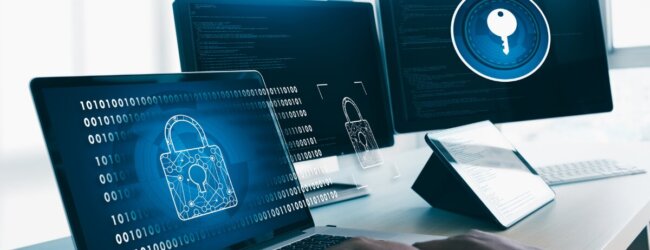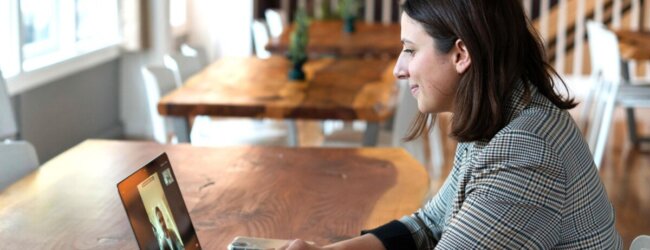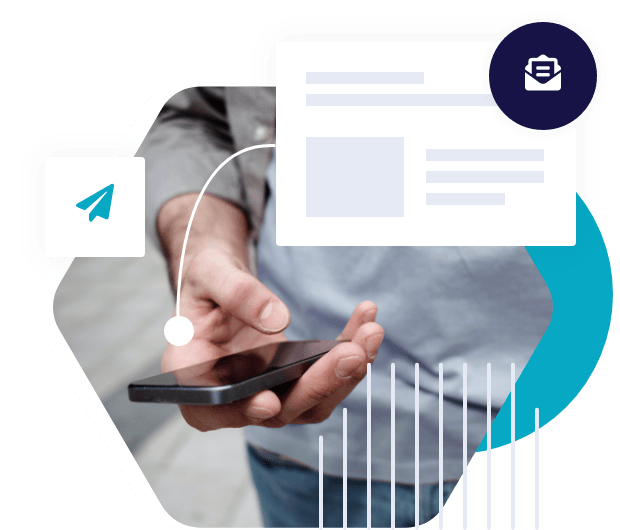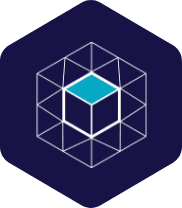
Mastering Remote Access Security: Best Practices to Keep Your Systems and Users Safe
Author: Kysha Praciak
· 5 mins readWelcome to our guide on mastering remote access security! Ensure your tech infrastructure is secure during the holiday season and beyond. Implement strong authentication protocols, encryption techniques, and trust between users and management. Assess your tech infrastructure for vulnerabilities and implement strong password policies, including two-factor authentication, to enhance remote access security.
Understanding the Importance of Remote Access Security
Remote access security has become increasingly important in today’s business environment. With more employees working remotely and accessing company resources through cloud-based applications and services, it is crucial to ensure that remote access is secure. Cybercriminals are constantly looking for vulnerabilities in networks and software to exploit for their own gain. This puts sensitive data at risk, potentially damaging a business’s reputation and bottom line. To address these concerns, businesses must implement strong authentication protocols, encryption techniques, and regularly update and patch software to maintain robust security measures. Trust between users and management is also critical when it comes to remote access security as employees need to understand the importance of adhering to established policies and procedures. By taking these steps, businesses can ensure smooth operations even during the busy holiday season when remote access activity may increase.
Assessing Your Tech Infrastructure for Vulnerabilities
- Assessing your tech infrastructure for vulnerabilities is a critical step in ensuring remote access security. It involves identifying potential weaknesses in your systems and applications that could be exploited by unauthorized users or malicious software.
- This assessment should cover all aspects of your network, including cloud services, user management, and data resources. By conducting a thorough evaluation, you can identify areas where additional security solutions may be needed to protect sensitive information from being compromised.
- Remote access security is crucial in today’s business environment as more employees are working remotely than ever before. Ensuring trust between users and the systems they use is paramount to maintaining secure operations during the holiday season and beyond.
Implementing Strong Password Policies to Enhance Remote Access Security
- When it comes to remote access security, implementing strong password policies is a crucial step in ensuring the safety of your business’s data and resources. One of the biggest risks with remote access is unauthorized users gaining access to sensitive information by using weak or easily guessable passwords.
- By enforcing strong password policies, such as requiring complex passwords that include a mix of letters, numbers, and special characters, you can significantly reduce this risk. It’s also important to regularly remind employees about the importance of creating strong passwords and to encourage them not to reuse passwords across different applications or systems.
- Additionally, implementing measures like automatic password expiration and two-factor authentication can further enhance your remote access security and help establish trust between users and the system they’re accessing.
- Two-factor authentication (2FA) can significantly enhance remote access security for businesses and their employees. With the increasing popularity of cloud-based services and applications, it’s crucial to implement 2FA as an added layer of protection against unauthorized access to sensitive data and resources.
- The process involves user authentication via two distinct factors, typically a password and a unique code sent to a registered device or app. This approach ensures that only authorized users can gain access to secure systems and networks remotely.
- By implementing 2FA, businesses can establish trust with their users while mitigating the risk of cyberattacks and data breaches caused by weak passwords or compromised login credentials. It’s essential to choose robust software solutions that support 2FA across various devices and platforms, ensuring that all remote access activities are secure and adequately managed.
Need Expert IT Solutions?
Get a Free Consultation Today!
Whether you’re dealing with network issues, cybersecurity concerns, or software integration, our team of IT experts is here to help. Don’t let tech troubles slow you down. Call us now for a complimentary initial assessment, or click below to fill out our quick contact form. Let’s make technology work for you.
Encryption Techniques for Secure Remote Data Transmission
- When it comes to remote access security, one of the most critical concerns is secure data transmission. Encryption techniques play a significant role in ensuring that sensitive information remains protected during transmission.
- As businesses rely increasingly on cloud-based solutions and remote applications, employees need to access essential resources from various locations and devices. This elevated dependence on remote systems makes encryption an indispensable component of any remote access security strategy.
- By encrypting data in transit, organizations can establish trust with users while safeguarding against potential cyber threats. There are several encryption techniques available, including symmetric-key encryption and public-key encryption, each with its unique strengths and weaknesses.
- Implementing robust encryption solutions can help ensure that your organization’s sensitive data remains secure during remote transmission, contributing significantly to overall network security management efforts for your business operations’ smooth running this holiday season.
Best Practices for Securing Remote Desktop Connections
- Remote desktop connections are a crucial aspect of remote access security, especially for businesses with employees accessing company resources and applications from remote locations. To ensure the secure transmission of data between remote systems, it’s essential to implement best practices that focus on authentication, encryption, and monitoring.
- Firstly, it’s recommended to use strong passwords and two-factor authentication to prevent unauthorized access by hackers.
- Furthermore, encryption techniques such as SSL or TLS can be used to secure the transfer of sensitive data over a network. It’s equally important to keep software updated regularly and patch vulnerabilities as soon as possible to avoid exploiting them by cybercriminals.
- Lastly, monitoring and auditing all remote access activities can help detect any suspicious behavior before they turn into major security incidents. By following these best practices for securing remote desktop connections, businesses can trust in their management systems’ reliability while ensuring users have secure access to essential services in a cloud environment.
Protecting Against Malware and Phishing Attacks in a Remote Environment
- In today’s remote work environment, protecting against malware and phishing attacks is crucial to maintaining a secure tech infrastructure. With employees accessing business applications and data from various locations, it’s important to implement strong security solutions to prevent unauthorized access.
- Remote access security can be enhanced by using two-factor authentication and encryption techniques for secure data transmission. Additionally, regularly updating and patching software can help maintain robust security measures.
- Monitoring and auditing remote access activities for suspicious behavior can also help detect potential threats early on. By implementing these best practices, users can ensure that their remote systems are secure, trustworthy, and running smoothly this holiday season.
Regularly Updating and Patching Software to Maintain Robust Security Measures
- Regularly updating and patching software is a crucial aspect of maintaining robust security measures for remote access. As businesses increasingly rely on remote solutions to manage their data, applications, and resources, it’s essential to ensure that all systems are up-to-date with the latest patches and security updates.
- Failure to do so can leave your network vulnerable to cyberattacks or unauthorized access by malicious actors. Regular software updates not only help keep your remote environment secure but also improve performance and functionality.
- By implementing an effective patch management system, you can reduce the risk of security breaches caused by outdated software while ensuring that your employees have uninterrupted access to necessary business resources. Trust in user authentication is key when it comes to securing remote access, and keeping all software current plays a significant role in maintaining that trust.
Monitoring and Auditing Remote Access Activities for Suspicious Behavior
- As businesses continue to rely more heavily on remote access solutions for their day-to-day operations, it’s becoming increasingly important to ensure that these systems are properly secured. One critical step in achieving this goal is monitoring and auditing remote access activities for any suspicious behavior.
- By keeping a close eye on who is accessing your network and what they’re doing while connected, you can quickly identify potential threats and take action before any damage is done. This process involves using specialized software tools that allow you to track user activity, as well as implementing strict policies around the use of remote access resources.
- With the right combination of security solutions and management practices in place, you can build trust with your employees and customers alike by demonstrating that you take remote access security seriously.
Ensuring Smooth Operations with Effective Remote Access Security
Ensuring smooth operations during the holiday season can be challenging, especially when it comes to remote access security. Remote access has become an essential aspect of business management, with employees accessing cloud-based applications and data from various locations. To maintain trust and secure remote resources, effective remote access security solutions are necessary. This guide has highlighted different ways of enhancing remote access security, such as implementing strong password policies, two-factor authentication, encryption techniques for secure data transmission, best practices for securing remote desktop connections, protecting against malware and phishing attacks, and regularly updating software to maintain robust security measures. By monitoring and auditing remote access activities for suspicious behavior, businesses can ensure that their tech infrastructure is running smoothly while maintaining a high level of security. With these measures in place, businesses can focus on delivering quality services without worrying about potential cyber threats this holiday season





Share